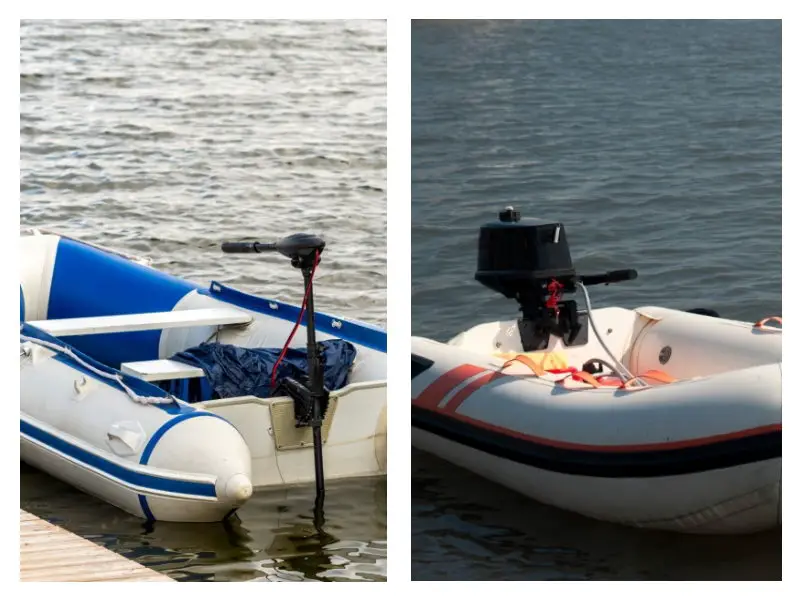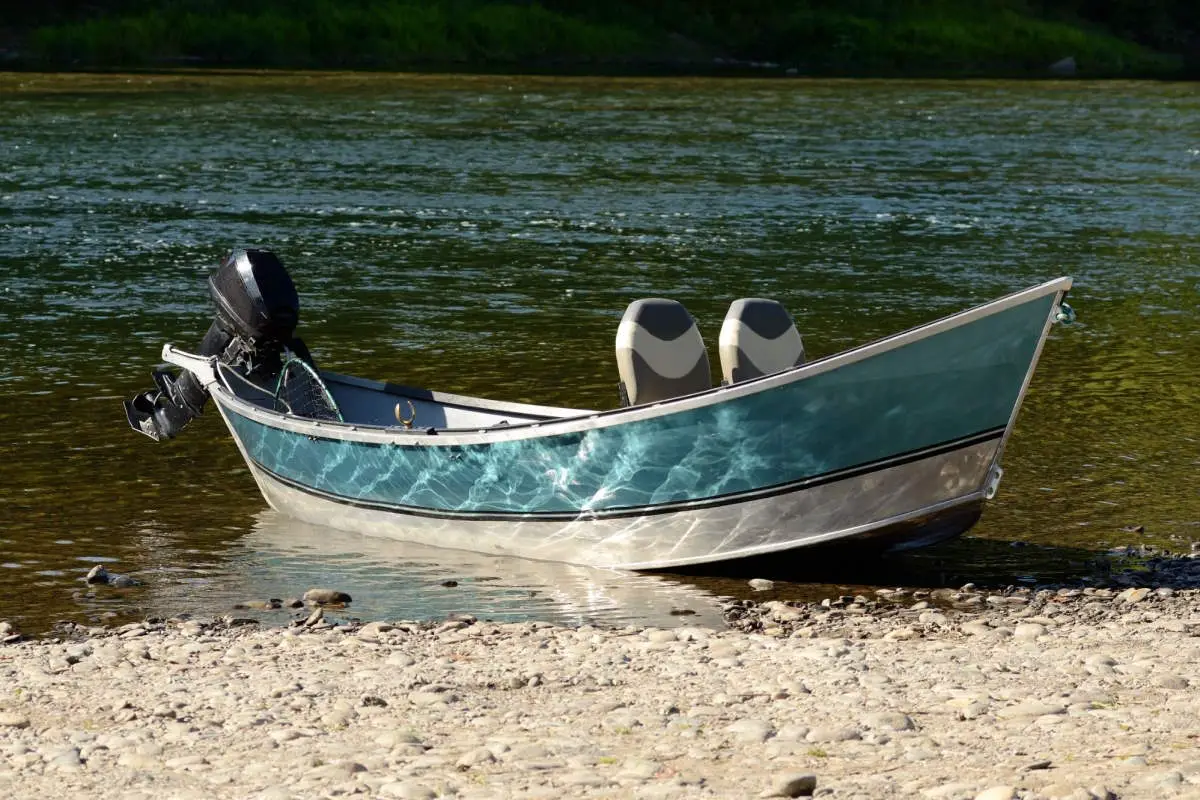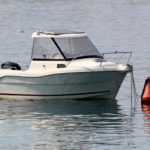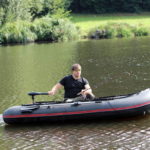Boating and fishing enthusiasts are familiar with two types of propulsion systems: electric trolling motors and gas motors. But which one is the better choice?
Electric trolling motors can be a more relaxing time, without all the noise and fumes. But gas motors are better for convenience, speed, and those journeying on long-distance boat trips. You can get to your destinations faster, refuel when needed, and make it back in no time.
Let’s get deeper into these benefits so you can choose which one of these motors is the best for you and your boat!
Gas Motors: A Short Overview
Most people often associate gas motors with boats. For one, the outboard motor is the most common propulsion system used in small vessels. These outward-facing motors are also used for steering.
There are currently two types of outboard motors: two- and four-stroke, which can deliver anywhere from 1.0 to 300 horsepower.
Another type of gas-powered engine is called an inboard engine. For these products, you will find it amidship, usually used for wakeboarding, waterskiing, and other tow sports.
Benefits of Choosing Gas Motors
It’s not by pure chance that gas engines are used for maritime vehicles for the longest time now. There are several benefits to using gas motors, including their speed and the fact that gasoline is readily available.
But there are more advantages, such as:
Range
When it comes to range, gas motors are the best. You can use these for long-distance trips and still have enough gas to make the trip back to the dock or launch.
Electric trolling motors, on the other hand, are ideal for shorter trips. You can get two to five hours of operation with a full battery, but of course, the operating times will depend on the type of battery you used, whether it’s damaged or not, or if you launch with a full charge.
Of course, you can bring spare batteries and more fuel cans with you for both gas and electric motors. However, boat motor batteries can be hefty, slow to recharge and cost a pretty penny, which isn’t true for gasoline.
Refueling or Recharging: Gasoline Is More Accessible
Gas-powered motors are also easy to refuel because you only need to pour the gasoline into the tank. Plus, if worse comes to worst and you run out of fuel, you can find a gas station if you come close to the shore to refill your fuel cans.
Recharging an electric trolling motor can take a while, usually requiring you to wait a couple of hours to recharge a battery fully. Plus, you would need to find the appropriate plug and power supply, which is not that easy to find just about anywhere.
Speed
When you’re choosing between an electric trolling motor and a gas-powered engine, don’t be confused by the pounds of thrust metric on an electric motor and the horsepower rating on a gas-powered engine.
These measures can be a bit misleading when it comes to talking about speed. For instance, a 36-pound thrust motor can move just as fast as a 42-pound thrust motor. Instead, look at its prop pitch and the revolutions per minute of the engine.
With that out of the way, gas-powered outboard motors generally are the king when it comes to speed. In most instances, these engines can run circles around electric trolling motors.

Electric Trolling Motors: What Are They?
Electric trolling motors are used to propel a fishing boat on the water without the loud noise of gas-powered motors. These motors are rated in 12, 24, and 36 volts, and power is usually stated in pounds of thrust, not horsepower.
When choosing a trolling motor, get one with a higher power. As a rule, you need five pounds (2.3 kilograms) of thrust to move 400 pounds (181.4 kilograms) of your boat’s weight.
Benefits of Choosing an Electric Trolling Motor
If you’re going fishing, the quiet that an electric trolling motor provides you is enough for you to choose it over a gas-powered engine. Imagine being able to sneak up on the fish rather than scaring them away with your motor.
What’s more, you don’t have to worry about overpowering fumes when you’re using batteries to power the engine. Plus, not having petrol onboard can help minimize the risks of fire and carbon monoxide poisoning.
What are other advantages that you can get from choosing an electric trolling motor over a gas-powered alternative?
Maintenance: Electric Trolling Motors Are Easy
Compared to gas-powered engines, trolling motors are low maintenance. For the most part, you only have to make sure that the batteries are fully charged to go on a fishing trip. From time to time, however, you will need to:
- Use fresh water to rinse the trolling motor and remove the debris after using it.
- Clean the propeller after using it to make sure that there are no tangles that can damage the motor’s seals.
- Inspect the prop nut and make sure that it’s tightened securely.
- Sand the propeller blades if there are nicks.
- Lubricate the composite shaft with silicone spray.
- Check for corrosion on the battery terminals.
In contrast, maintaining an outboard engine will require you to flush out the engine after your trip. You also need to ensure that the water pump is not clogged. You will then need to disconnect the engine’s fuel line and allow the engine enough time to burn off all the fuel that’s already in the carburetor.
Further, you should check for water and fuel leaks and wipe everything down with Quick-lube or WD40. And these are just what you should do after every boating excursion you have.
Regular maintenance will include checking the fuel line for worn spots or cracks and ensuring that the fuel-line fittings, primer bulbs, clamps, and other parts are in tip-top condition.
Another consideration is that batteries are more portable than a full container of gas. Batteries are also tidier, and if you spill a tank of gas, it’s going to be very messy and difficult to clean. Plus, it’s going to smell and can harm local wildlife.
Easy Maneuvers
Trolling motors can be very easy to steer, which is something that you can’t say for outboard motors. You can make sharp turns and navigate through narrower passes with a trolling motor.
What that means is that trolling motors can take you to hard-to-reach areas and coves easily. Outboard motors, on the other hand, do better in open water.
Environmentally-Friendly
Aside from the noise-free boating experience, electric trolling motors are green. In other words, they do not pollute the water or air.
A traditional two-stroke engine can discharge up to 30 percent of unburned fuel into the water. These discharges can change the pH of the water and the level of dissolved oxygen in the water.

Which Is Better: Electric Trolling Motor or Gas Motor?
There are boating and fishing enthusiasts who swear by the power and speed of gas motors, while others like how quiet electric trolling motors are. The honest answer to which of these two types of motors is better is that it depends on what you need.
Their benefits differ so much that we’re tempted to suggest that you buy both if you have the budget for it. You can go fast on a gas-powered engine and then switch out to a trolling motor when you’re in a narrow stretch or if you don’t want to scare the fish away.
Or simply have the trolling motor as a backup for those times when your gas-powered engine runs out of fuel and you’re way out in open waters to refuel.
Conclusion
For this head-to-head comparison, no one is a clear winner. But knowing the benefits of electric trolling motors and gas-powered motors can help you choose which one is more ideal for the type of boating and fishing adventure you usually do.




